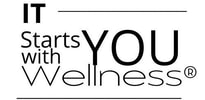2.2 (L) Importance of Feeling Safe
Importance of Feeling Safe:
Think about when you aren’t feeling safe. How do you feel? Scared, weak, vulnerable?
What I eventually realized, is that in order to feel safe, I needed to tap into what makes me feel safe. So what makes us feel safe? The inner strength, confidence, and courage inside of us. So, by building up one’s inner strength, confidence and courage, we can build up our ability to feel safe.
When following this process, some people don't even realize that significant changes are occurring.. but they are. They are very subtle, at first, so subtle, they may be unrecognizable. But over time, we may start to recognize some changes of routine, and even of the choices we make. We may even find our attitude changes, and most importantly, how we REACT to challenges and stimuli. These important changes all occur from the inside out. We can even have an “A-ha!” moment. This is a moment that one day a person will wake up and realize they have changed. This is the best way to heal, since it occurs so slowly over time, and it gives the body the ability to change naturally.
Think of it this way. If you starve yourself to lose weight quickly, you may lose some weight initially, but, eventually, you may not only gain it all back, but may even gain more. This happens because the body doesn’t understand what is going on. It had access to food, but all of a sudden it didn’t. This will cause the brain to stimulate hunger and want you to eat MORE to compensate, because it thinks you were having trouble gaining access to food.
If you lose weight slowly, and over a longer period of time, while training yourself on better eating habits, you are more likely to not only lose the weight, but to keep the weight off indefinitely. This method never limits your access to food, and you are slowly training your brain for a different way.
It is the same with this process. We aren't going to deprive (or starve) the body into thinking it needs to protect itself. We are going to HELP the brain recognize that it doesn't need to stay in protection mode all the time. Over enough time, the mind will catch on to the new habits of feeling safe, and things like anxiety, will just melt away naturally, because when we are safe, we won’t worry as much. We won’t get obsessive over things our brain wants to dwell on. We will be more readily relaxed, and able to handle situations as they arise.
Think about when you aren’t feeling safe. How do you feel? Scared, weak, vulnerable?
What I eventually realized, is that in order to feel safe, I needed to tap into what makes me feel safe. So what makes us feel safe? The inner strength, confidence, and courage inside of us. So, by building up one’s inner strength, confidence and courage, we can build up our ability to feel safe.
When following this process, some people don't even realize that significant changes are occurring.. but they are. They are very subtle, at first, so subtle, they may be unrecognizable. But over time, we may start to recognize some changes of routine, and even of the choices we make. We may even find our attitude changes, and most importantly, how we REACT to challenges and stimuli. These important changes all occur from the inside out. We can even have an “A-ha!” moment. This is a moment that one day a person will wake up and realize they have changed. This is the best way to heal, since it occurs so slowly over time, and it gives the body the ability to change naturally.
Think of it this way. If you starve yourself to lose weight quickly, you may lose some weight initially, but, eventually, you may not only gain it all back, but may even gain more. This happens because the body doesn’t understand what is going on. It had access to food, but all of a sudden it didn’t. This will cause the brain to stimulate hunger and want you to eat MORE to compensate, because it thinks you were having trouble gaining access to food.
If you lose weight slowly, and over a longer period of time, while training yourself on better eating habits, you are more likely to not only lose the weight, but to keep the weight off indefinitely. This method never limits your access to food, and you are slowly training your brain for a different way.
It is the same with this process. We aren't going to deprive (or starve) the body into thinking it needs to protect itself. We are going to HELP the brain recognize that it doesn't need to stay in protection mode all the time. Over enough time, the mind will catch on to the new habits of feeling safe, and things like anxiety, will just melt away naturally, because when we are safe, we won’t worry as much. We won’t get obsessive over things our brain wants to dwell on. We will be more readily relaxed, and able to handle situations as they arise.
